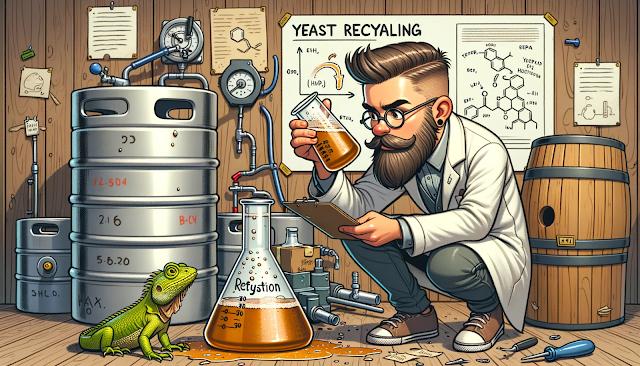Yeast is a remarkable microorganism, crucial for converting sugars into alcohol during fermentation. Although fermentation might seem straightforward on the surface, achieving a brew with the desired taste involves managing a myriad of variables. While factors like temperature, pH levels, time, and oxygen exposure are often discussed in brewing circles, the nutritional needs of yeast can sometimes be overlooked. Let's delve deeper into this vital aspect of brewing.
The Role of Yeast Nutrients in Brewing
Is Nutrient Supplementation Always Necessary?
Most of the time, the malt in your beer provides adequate sustenance for yeast cells. However, for yeast to truly thrive and efficiently ferment the wort, achieving a high attenuation, elements such as free amino nitrogen, fatty acids, vitamins, and other minerals become essential. While you might never require additional nutrients in many brews, for high attenuation rates or brewing a high ABV beer, yeast nutrient supplementation might be beneficial.
When is Yeast Nutrient Essential?
Water Quality: If your brewing water is deficient in essential metals like calcium, magnesium, and zinc, then adding nutrients can be beneficial. For instance, zinc can boost the yeast cell count, while magnesium aids cellular metabolism.
Adjunct-rich Brews: Beers with a high proportion of adjuncts (non-malt sources of fermentable sugars) might need nutrient support. Since pure sugar doesn't nurture yeast, a beer with more sugars may require nutrients for optimal yeast health.
Other Alcoholic Beverages: If you're venturing into wine, cider, or mead-making, nutrients become even more vital. These beverages lack the malty richness of beer wort. For instance, honey, a primary ingredient in mead, contains no nitrogen, making nutrient addition almost a must.
Benefits of Yeast Nutrients
Reduced Lag Phase: A shorter initial fermentation phase can lead to fewer off-flavors.
Optimized Fermentation: Proper nutrition can push yeast towards more complete fermentation, reducing unwanted compounds like diacetyl or acetaldehyde.
Methods of Yeast Nutrition
Nitrogen Supplements: Often supplied as di-ammonium phosphate or urea, these cater to a lack of free amino nitrogen. Brands like Fermax and Fermaid are favorites among brewers.
Yeast Hulls: Essentially dead yeast, the residues of which can be consumed by live yeast, extracting their nutrients.
Yeast Energizers: Used to kickstart or rejuvenate halted fermentations.
Using Nutrients with Yeast Starters
Yes, it's possible! It's common practice for brewers to add a small amount of nutrients to their yeast starters, enhancing their efficacy. Even bakers have adopted this method, adding nutrients to sourdough starters.
Timing and Quantity
While the exact timing and quantity can vary based on the specific brew and the yeast strain, a general guideline is:
Timing: Nutrients are typically introduced at the beginning of fermentation. If using an energizer, it's often added when fermentation appears to have stalled or halted.
Quantity: Generally, 1 gram per liter or about a teaspoon for every 5 liters (or 1 gallon) is recommended, though always refer to manufacturer guidelines.
Exploring Servomyces
Produced by renowned yeast developer, White Labs, Servomyces is a specially formulated yeast supplement. The key advantage is its ability to transfer micronutrients like zinc to live yeast cells without any toxicity. If your brew lacks zinc, Servomyces could be your go-to. When doing a boil, one capsule added about ten minutes before completion is typical. For kit brews, directly adding the contents of the capsule to the wort is recommended.
In Conclusion
Yeast nutrition might seem like a small aspect of brewing, but its implications on the final product are significant. Whether you're a novice or an experienced brewer, understanding the nutritional needs of yeast can help you elevate your brewing game, leading to better-tasting beers and other beverages.
Remember, like any living organism, yeast thrives best when its nutritional needs are adequately met.


